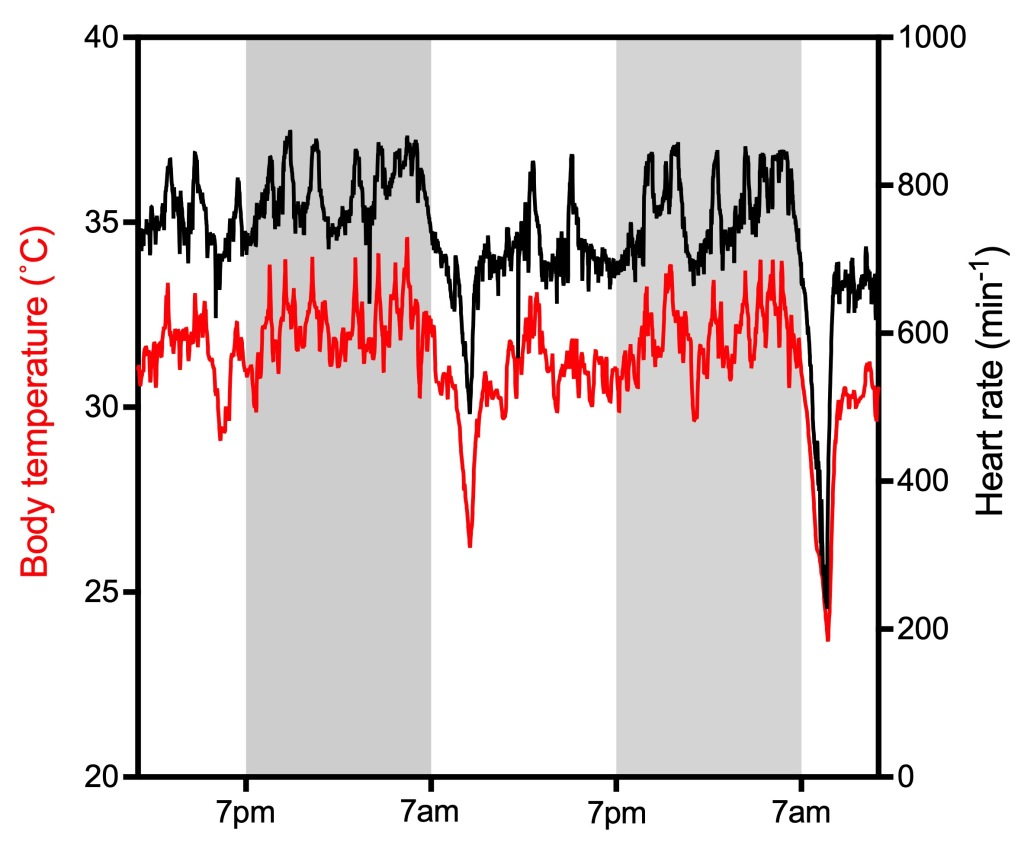The evolution of endothermy and the maintenance of high and stable body temperature has been instrumental to the success and diversification of mammals and birds. By maintaining high body temperature, endotherms can sustain correspondingly high metabolic rates to support locomotion and reproduction across broad ranges of environmental temperature. However, the ability to thermoregulate can be threatened during environmental challenges. Thermogenesis (body heat generation) necessary for maintaining high body temperature can demand high amounts of O2 and metabolic fuels, and meeting these high demands may become untenable during periods of cold temperature or low food availability. Some endotherms overcome this challenge by temporarily depressing body temperature, metabolism, and thermogenesis during daily torpor or seasonal hibernation. Periods of heat exposure can also challenge thermoregulation, by constraining heat dissipation and thus increasing body temperature. Such increases in body temperature can impair performance and may even be fatal if body temperature rises too high. Our research examines thermoregulation during these kinds of challenges in deer mice.

High-Altitude Environments
Adjustments in body temperature regulation and the use of torpor could help reduce the metabolic and O2 demands of thermogenesis in the cold and hypoxic environment at high altitude. We are using a comparative approach with deer mice to examine how phenotypic plasticity and/or evolutionary adaptation to high altitude has altered these processes (see Comparative & Evolutionary Physiology for a description of our lab colonies and experimental manipulations). We have found that exposure to cold hypoxia leads to plastic reductions in body temperature, and that high-altitude mice have evolved lower body temperatures than their low-altitude counterparts. Theoretical estimates suggest that these reductions in body temperature could together reduce metabolic demands by approximately 10–30%.

When food is abundant, most deer mice do not make frequent use of torpor, even during chronic exposure to cold hypoxia. In the minority of individuals that do, torpor bouts usually begin early in the daytime inactive phase, and are characterized by pronounced reductions in body temperature, metabolism, and heart rate (see below). Torpor becomes more frequent in deer mice during periods of low food availability. Ongoing work is examining the use of torpor in different conditions and is also exploring the mechanisms involved.

Hot Environments and Climate Change
Climate change is having pervasive impacts on many animals. Warming temperatures associated with climate change are causing population declines in many species, and the ranges of many species are shifting towards higher latitudes and elevations. For many mammal species, however, the physiological impacts of warming environmental temperatures remain largely unknown. Our ongoing research is examining how acute and chronic exposure to heat impacts thermoregulation and locomotory performance, along with the physiological mechanisms involved.

